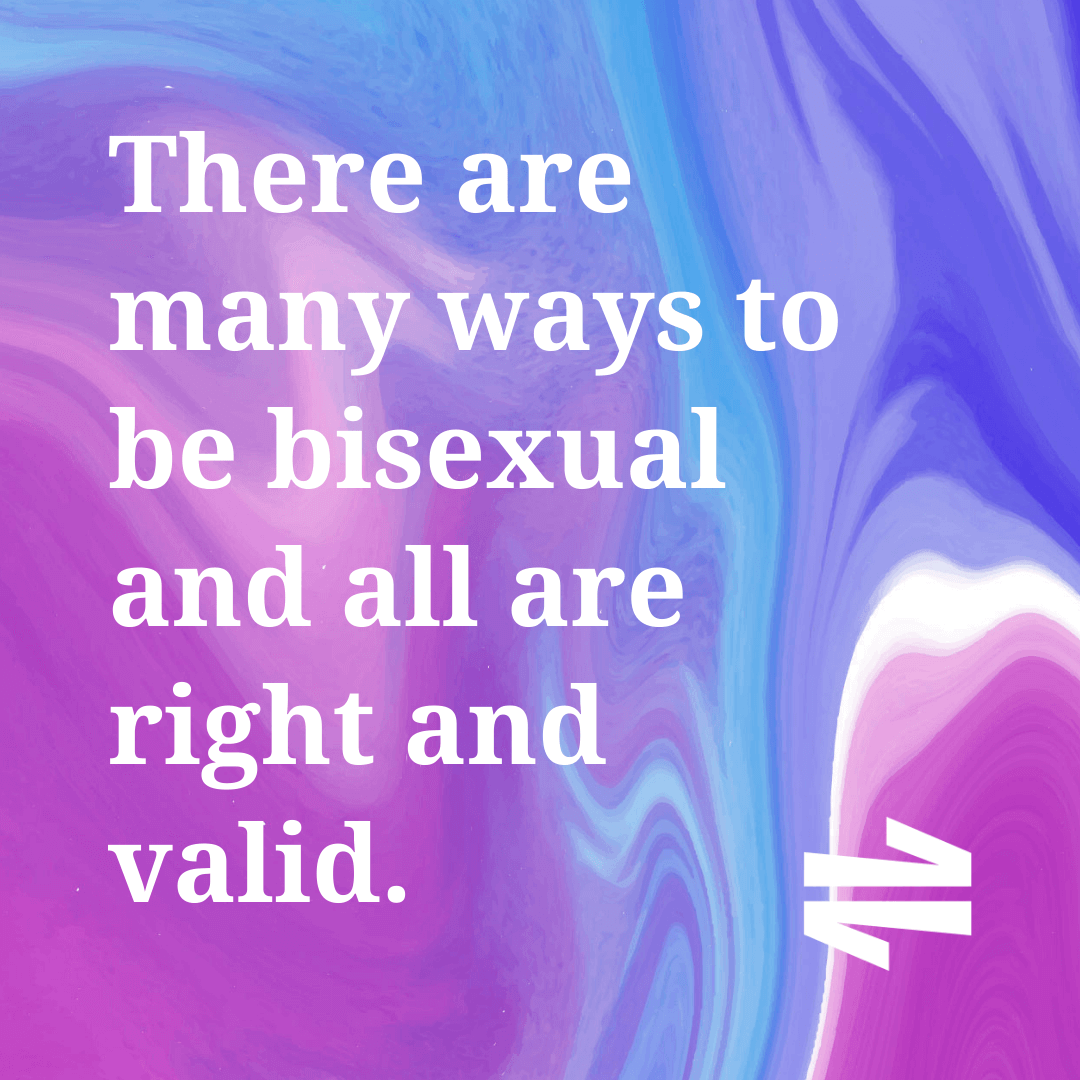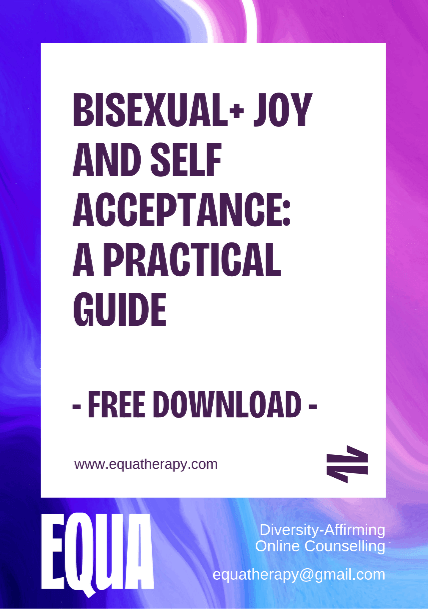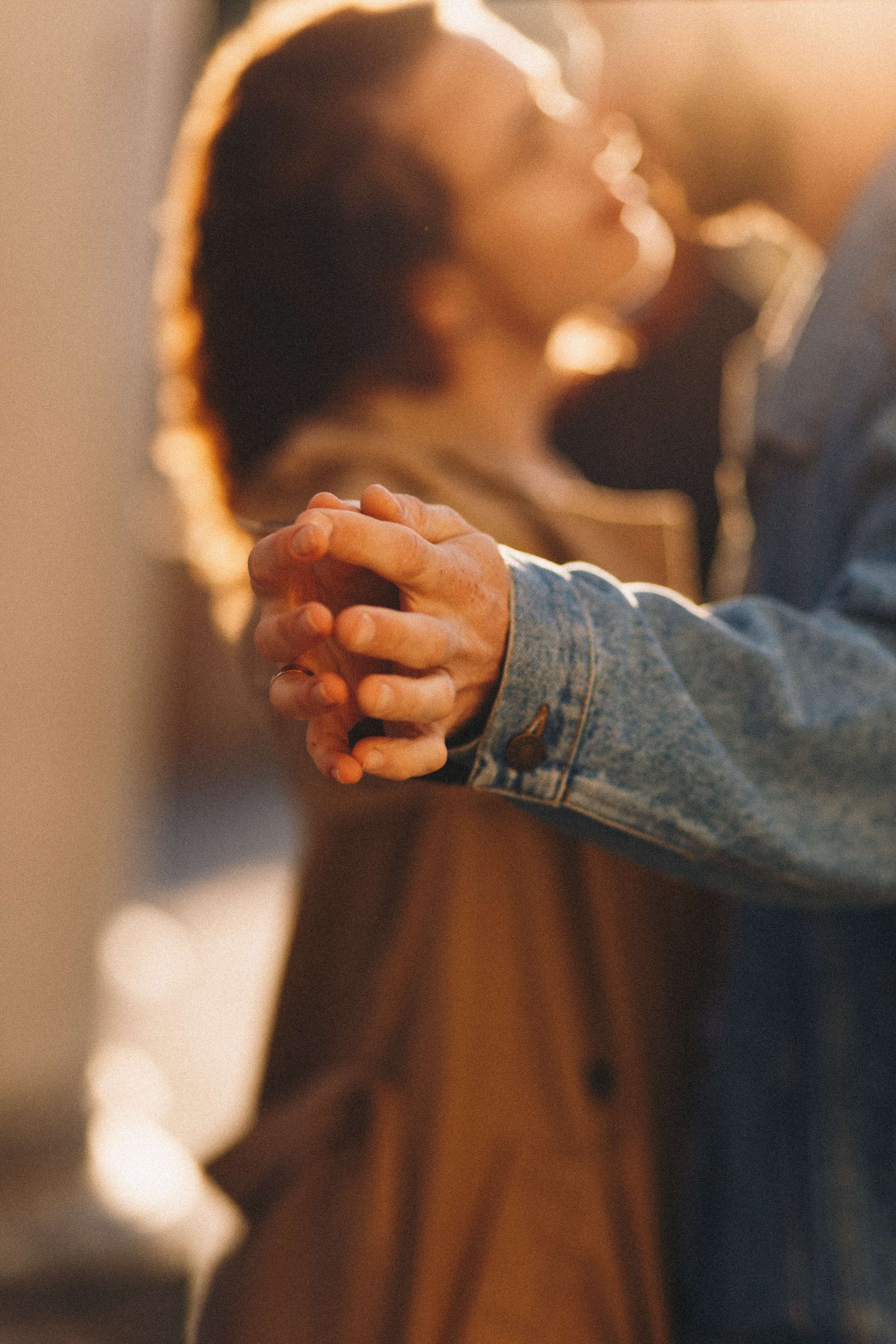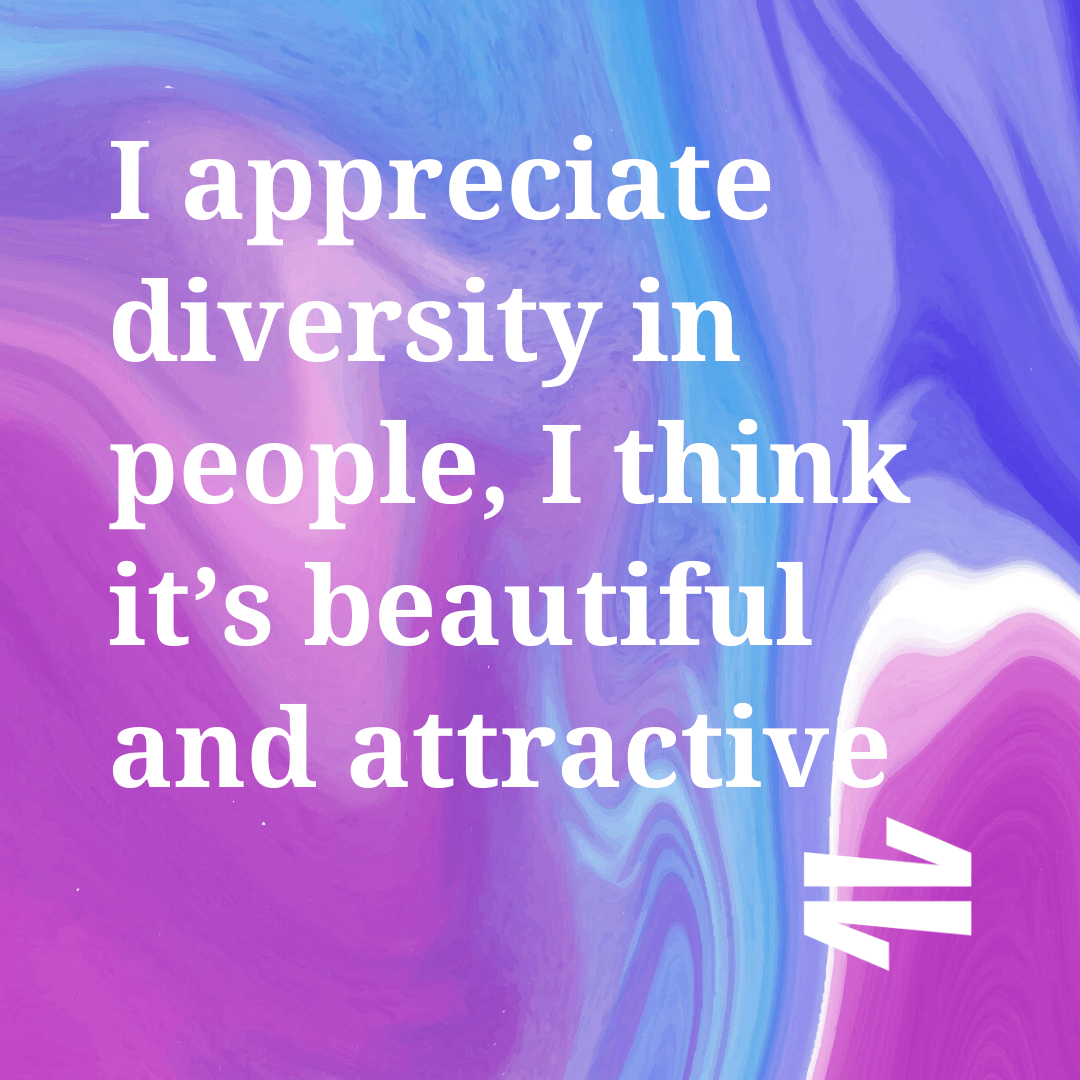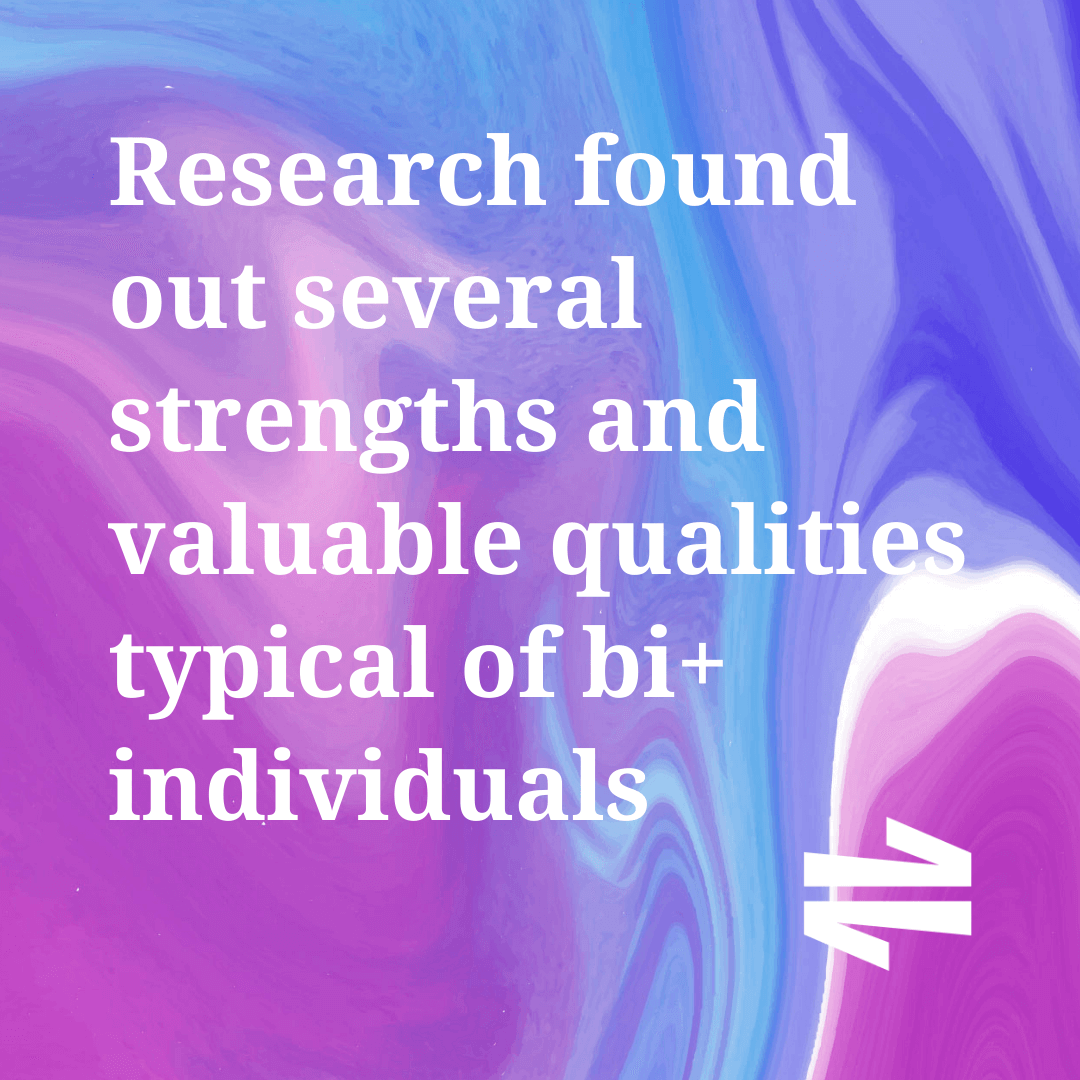Bisexual Joy: a journey to Bi+ Self-Acceptance and Self-Care
You may be asking yourself “What bisexual am I?”, “how being bisexual feels?”, “how do I accept myself for being bisexual?”. Understanding these is the first step towards accepting your bisexuality.
This article covers:
What Bisexual Means:Understanding the Spectrum
Importance of self-acceptance in BI+ mental health
Understanding Bisexual Self-Acceptance and its challenges
Bi Joy and Bi Pride
Practical strategies to How to Accept and Embrace your Bisexuality
Seeking therapy or counselling
Download our free guide to Bi+ self acceptance and self care
Reference List
1. What Bisexual Means: Understanding the Spectrum
Over the last decade the definition of bisexuality moved beyond the binary idea that being bisexual means being attracted to ‘men and women’.
Nowadays the term bisexual is an inclusive umbrella term to describe someone being sexually and/or romantically attracted to more than one gender. It recognises the nuances and fluidity of gender and sexual identity such as trans, non binary, gender fluid identities and so on (Pollitt, 2021; Hayfield, 2022)
Some terms that fall under the BI+ spectrum are pansexual, queer, fluid, polysexual, omnisexual and many more.
It’s important to note that bisexual individuals may:
experience attraction to different genders to different degrees, ways and at different times
not be attracted to people of different genders i.e. someone who identifies as agender may only be attracted to other agender individuals (Shearing, 2021).
Basically there are many ways to be bisexual and all are right and valid.
2. Importance of self-acceptance in BI+ mental health
Research shows a higher occurrence of mental health issues amongst bisexual individuals compared to heterosexual, gay and lesbian demographics, including depression, anxiety, drugs and alcohol addiction and increased risk of intimate partner violence (Pollitt, 2021; Hayfield, 2022).
This has been linked to the unique stigma and marginalisation bisexual people experience from both the heterosexual and gay/lesbian communities, such as Biphobia, Bierasure and BI invisibility, in addition to other forms of marginalizations such as sexism, racism, ableism etc.
This can make accepting yourself as bisexual difficult and even more important to cultivate.
In has been demonstrated that self-compassion can mitigate stress is associated with better mental wellbeing (Helminen, 2023).
3. Understanding Bisexual Self-Acceptance and its challenges
To develop self-acceptance, a key step is understanding what barriers you may be facing to accepting it and what anti-bisexual messages you may have absorbed from your environments (family, friends, school, work, society, culture).
Let’s understand some of these barriers and bi negative messages a bit more.
BIPhobia. Stonewall defines Biphobia as “The fear or dislike of someone who identifies as bi based on prejudice or negative attitudes, beliefs or views about bi people. Biphobic bullying may be targeted at people who are, or who are perceived to be, bi.”
Bi phobia is based on the assumption that one can or should only be attracted to one gender i.e being straight, gay or lesbian, therefore implying that multi attraction is not natural or legitimate. This can lead to feeling invalidated, that your own sexual identity is denied, exclusion from both straight and gay/lesbian spaces leaving you feeling disconnected and not belonging (Pollitt, 2021).
A few examples of Biphobic messages are: it’s about being greedy, unfaithful, bi people can’t choose, are confused, “it’s just a phase”, or that being BI is trendy or that they must date both men and women (McCormack, 2023; The Bisexual Index)
Bi Erasure is the erasure or removal of anything that is bisexual including bi people experiences, books, history.
This is often seen in the media when a bi+ celebrity may be described as gay or lesbian instead, or naming every same-sex couple gay. It could be that your friends and family refer to you as straight or gay/lesbiand depending on the gender of your current partner, therefore unintentionally erasing your bi+ identity (Shearing, 2021; McCormack).
Bi+ invisibility is when bi+ people, stories, concerns, experiences are not represented in conversations, media and public view. Historically and to this day media often don’t show bisexual characters or they are assumed to be gay or lesbian. Bi+ individuals may come to the conclusion that their multi-gender attraction is wrong, should not exist or is unnatural (Pollitt, 2021).
4. Bi+ Joy and Bi+ Pride
As this article is intended to be a guide to self-acceptance, pride and celebration of your bisexuality,
it’s important to note that research found out several strengths and valuable qualities typical of bi+ individuals including (Hayfield, 2022):
Higher sexual awareness
Openness to various sexual experiences
Giving more importance to the person over their gender
Higher willingness to exploration and appreciation of diverse relationships
Valuing difference and diversity within people
More accepting of people for who they are
More empathetic
More tolerant
5. Practical strategies to How to Accept and Embrace your Bisexuality
Now you understand why you may be having a hard time accepting your bisexuality, here are practical ways to foster bi+ self-acceptance, celebrate and embrace your bisexuality with joy and pride.
You can also download for free my guide to Bi+ self-acceptance and self-care. Inclusive of reflection prompts, customizable affirmations and exercises to get you started in your own self-acceptance journey. Download here
Affirmations
Whether you repeat affirmations as daily mantra when you wake up, before bedtime, include them as part of your regular meditation practice, or stick them to the door of your fridge so you can see them each time you grab a snack, or even share them with a someone who is also Bi+ or an ally, affirmations are a way to create an internal narrative that is accepting, validating and affirming of you.
Here are some examples, but you are most welcome to create your own, in fact I’d recommend it!
I am queer enough
I am Bi+ regardless to the gender of my current partner/s
I am Bi+ and my sexual behaviour doesn’t define my orientation
It’s not a phase
I am a committed and loyal partner
I know who I am and who I like, there is no confusion about it
I appreciate diversity in people, I think it’s beautiful and attractive
I am open to people’s gender identity, no matter how they define and express it
I belong to queer spaces and I don’t need to prove it
I am Bi+ regardless of my relationship status
I can embrace my bi+ identity and attend pride events even when In a long term relationship
I am bi+ even when I’m in a relationship, no matter if it may be read as straight or gay by others
My bisexuality is valid regardless to what sexual experiences I had in the past
Being bisexual is an enriching dynamic experience as I often learn about new parts of my identity
Journaling (Give it a chance!)
This is not about keeping a diary (although you can if you want). Journaling is an effective therapeutic self help tool to help identify and process thoughts and feelings. You can follow a structure, use prompts or write on a flow as you prefer.
You may use journaling for self-acceptance to:
Recognize your thoughts and feelings about being bisexual
Identify any internalised bi phobic believes and reframe them in an affirming way (see affirmations above to help reframe)
Gain clarity
Communicate to any hidden part of yourself, safely and confidentially
Validate your experiences and give them space
Acknowledge your progress and achievements towards self-acceptance
Bisexual Community Engagement Online and Offline
Affirming interactions with others can have a nurturing and consolidating effect for self-acceptance as you are feeling seen, validated, welcomed and accepted by peers. They can also be spaces in which you can ask questions and learn about other Bi+ people experiences you may relate to.
Attending general LGBTQ+ support groups can be a way to go about it and the majority of times they are very welcoming and you’ll find many other Bi+ people there.
However you may also choose to approach Bi+ only community groups i.e. BiPhoria (Manchester), BiCon, Liverpool Bi+ group, London Bisexuals Meet Ups, Brum Bi Group (Birmingham and West Midlands) and many more depending on where you are based.
To note is that some of these groups also run online therefore you can be based anywhere in the country and can be useful if you don’t have a local Bi+ group or live in more rural areas. Get in touch with them if unsure.
Others ways are:
Attending queer bars
Queer activity groups i.e. co-working, book clubs, crafting groups, hiking groups etc
Contributing to Bisexual Awareness Week, #BiWeek, which this year falls on 16-23 September 2024
Attending Pride events and BiCon (Mid August normally)
Bi+ or queer led podcasts and books or audiobooks
Facebook groups, Instagram
Wearing the Bi+ or Pan flag colours.
Wearing the flag’s colours can be a simple and possibly visible way to express Bi+ joy and embrace this part of your identity.
Maybe it’s an image on the lock screen of your phone, or your underwear, or something more out there like a t-shirt, or make up, or nails, shoe laces. It can be as discrete or visible as you feel more comfortable
6. Seeking LGBT+ online therapy or counselling
If you are having a hard time with your bisexuality, or you’re not sure how to come out or worried about the impact of your current relationships, counselling with a LGBTQ+ affirming therapist can go a long way.
Counselling is a neutral space, away from all the judgements, stereotypes and expectations, therefore allowing you to connect with this part of your identity safely and confidentially.
It can make you feel validated, seen, understood and accepted unconditionally. It can be a real antidote to shame or if you’re feeling stuck and confused on what to do.
If you are looking for a Bi+, pan or queer affirming therapist, feel free to get in touch.
I’m Valentina, owner of EQUA and qualified Person-Centred Online counsellor supporting the LGBTQ+ community thrive.
Request booking, availability or ask a query about our therapy services . We aim to reply within 24 hours
07522 138051
7. Download our free guide to Bi+ self acceptance and self care
A simple and effective guide to get you started in your journey to accept, embrace and celebrate your Bi+ identity with joy and confidence.
8. Reference List
Bi.org glossary; https://bi.org/en/glossary
Biresource https://biresource.org/what-is-bisexuality/
GLAAD https://glaad.org/reference/bisexual/
Hayfield N. (2022). Recent developments in research with bisexual women. Current opinion in psychology, 48, 101489. https://doi.org/10.1016/j.copsyc.2022.101489
Helminen, E. C., Ducar, D. M., Scheer, J. R., Parke, K. L., Morton, M. L., & Felver, J. C. (2023). Self-Compassion, Minority Stress, and Mental Health in Sexual and Gender Minority Populations: A Meta-Analysis and Systematic Review. Clinical psychology : a publication of the Division of Clinical Psychology of the American Psychological Association, 30(1), 26–39. https://doi.org/10.1037/cps0000104
McCormack, M. (2023). Issues in bisexual men's lives: Identity, health and relationships. Current Opinion in Psychology, 49, Article 101501. https://doi.org/10.1016/j.copsyc.2022.101501
Pollitt, A. M., & Roberts, T. S. (2021). Internalized Binegativity, LGBQ+ Community Involvement, and Definitions of Bisexuality. Journal of bisexuality, 21(3), 357–379. https://doi.org/10.1080/15299716.2021.1984363
Shearing, L. (2021). Bi the Way
Stonewall https://www.stonewall.org.uk/bi-hub
The Bisexual Index http://www.bisexualindex.org.uk/


